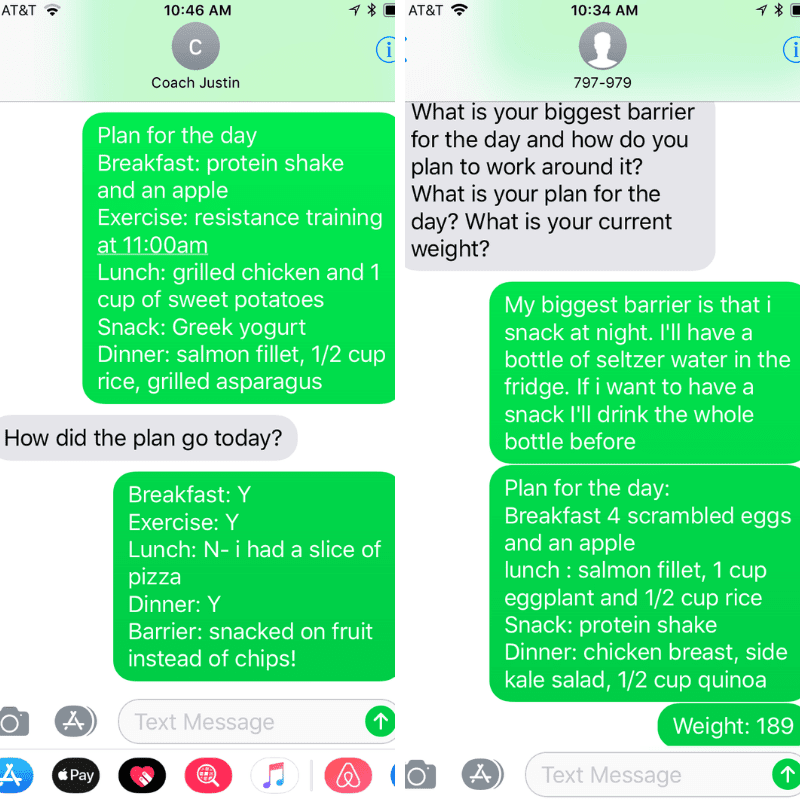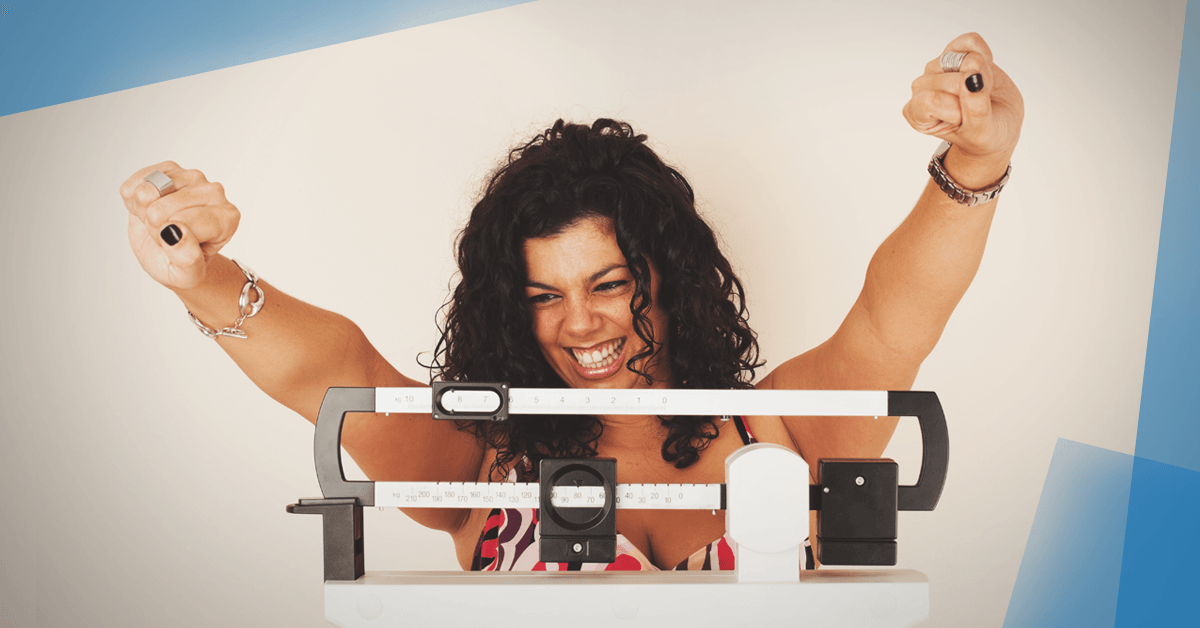I want to show you some eye-opening math.
Let’s say you see a client three times a week. She’s dedicated, works hard when you’re together, and has a real desire to get fit and lose weight. But for some reason she’s not getting the results you both want.
Let’s call it the Three Percent Problem.
She’s with you a little less than 3 percent of her waking hours. Which means she’s on her own the other 97 percent of the time, free to make the kind of choices that undermine everything you’ve been working toward.
It wasn’t always this way. When you first started working together, she was motivated to do everything you suggested. She cut back on fast food, swapped out bread and pasta for vegetables, and threw in some cardio almost every day. That’s how she lost 16 pounds the first two months. And of course she gave you all the credit.
It was great while it lasted. Which it didn’t. Once her enthusiasm wore off, so did her adherence. And once her adherence dissolved, her weight loss stalled, frustrating both of you.
So how do you solve the Three Percent Problem without following your client around all day, which would just be creepy? Your best choice is also your only choice: Help her improve her self-regulation skills.
READ ALSO: Why You Should Have Dinner with Your Clients
Self-Regulation 101
It’s easy to skip dessert when there’s nothing in the house to tempt you. But have you ever said no to a second helping of Grandma’s homemade cheesecake? Yeah, me neither. If you have, you’ve practiced self-regulation—the ability to monitor and control behavior.
Now imagine what your client deals with every day in her office: A tray of bagels in the kitchen every morning. A plate of baked goods at the 10 a.m. meeting. A cake for every coworker’s birthday. Drinks and bar food every time there’s something to celebrate. It’s like dinner at Grandma’s house more than 200 days a year.
Because of the limited time we spend with our clients, it’s on us to help them harness and build their self-regulation strength the same way we help them with their physical strength. That means helping them develop plans and then track their progress.
STEP 1: Make Plans
You want to be a good trainer? Be a good listener. I like to give clients a solid 30 minutes to talk about their biggest challenges. Then I’ll follow up with an email restating the key points of our conversation, which reinforces my understanding. At the end I’ll ask them to think about some ways to work around their challenges, which we’ll talk about in our next session.
That’s when we refine the ideas and put them into two categories: “action” plans and “coping” plans.
What’s a good action plan?
Lectures rarely result in action, so it doesn’t do much good to say “exercise more” or “eat more vegetables.” If that worked, every American would weigh 20 pounds less and we wouldn’t need articles like this one. Action plans work better because they’re specific. They establish the time, the place, and the ways a behavior will be carried out.
An action plan might look like this:
“After work on Monday, Wednesday, and Friday, I’ll hit the gym for at least 30 minutes of lifting and 15 minutes of cardio.”
It’s simple and straightforward. If your client lived in a world where there’s never a conflict, it would work perfectly, and you could stop there. But she doesn’t live in that world. That’s where coping plans come in.
What’s a good coping plan?
Maybe your client averages 1,000 empty calories per episode of The Good Place. Maybe she goes out to lunch every workday, or hears the siren song of shredded cheese coming from the fridge at 3:32 a.m.
The details will be different for every client, but we can group the urges that drive their unhealthy behaviors into three categories:
- Structural stimuli come from the foods themselves. No one’s tempted by celery in the crisper, but a plate of fresh-baked cookies in the break room might send the most dedicated low-carb dieter into a crisis of faith.
- Personal stimuli come from emotions like stress, frustration, or anxiety. While you might shake off a suck-ass day at the gym with a long run or bike ride, your client copes with Stone IPA and a pizza.
- Social stimuli come from family, friends, or coworkers. It’s like your cheesecake-wielding Grandma cloned herself a dozen times.
Coping plans specify healthy or (at least) less-unhealthy alternatives to your client’s habitual response to these ever-present stimuli. A good coping plan accomplishes three important goals:
- Identifies the problem
- Highlights what caused the problem
- Asks clients what they could do instead
For example, if your client has some “low-hanging fruit” behavior, like pounding 10 beers a night on Friday and Saturday, he isn’t going to drop any weight (unless he loses his appetite because of alcoholic liver disease, which is the opposite of a win). A coping plan offers healthier options or small, positive steps. A few examples:
- “For every beer, I’ll drink a glass of water.”
- “One night this weekend, I’ll do something other than drink.”
- “After a night of not drinking, I’ll write down how I feel when I wake up, and try to build on that.”
READ ALSO: How to Help Your Clients Make Better Choices in any Social Situation
Your role: Send out reminders
But even with a solid action plan and reasonable coping plans, life still gets in the way. I work with clients who travel frequently, or have high-stress jobs or heavy family commitments. Ask them on Monday and they can’t tell you what’s happening on Wednesday.
That’s where you come in. The more you stay engaged, the better your clients’ chances to stick with their plans. But how? You may be just as busy and stressed as they are. I know I am. I balance teaching, personal training, and exercising, while also attempting to have a social life—all while I’m working toward my PhD.
The solution is to automate reminders to your clients. I’ve had success with EZ Texting and Oh, Don’t Forget. Inside of five minutes I can set up recurring reminders that cover a month’s worth of texts.
A typical text asks:
- What’s your plan for the day?
- What’s your plan to overcome any challenges, expected and unexpected?
- How’s your progress? Are you sticking to the plan? (More on this in a second.)

STEP 2: Track Progress
Evidence supports the use of self-monitoring when attempting healthy changes, and you’ve given your clients the tools to do exactly that. Now you need to figure out how well it’s working. Two key questions to ask:
Are you following the plan?
There’s no such thing as perfect adherence, in large part because there’s no such thing as a perfect plan. You shouldn’t expect it from the client, and the client shouldn’t expect it from himself. (Although you have to hope the client follows directions somewhat better than baby Groot with a planet-killing atomic bomb.)
What you should expect is accountability. It’s crucial for your clients to let you know what they are doing. Otherwise, there’s no way to know if the plan is feasible for them. If they can’t follow the plan even in a general way, it’s time to make a new one.
Are you seeing results?
Successful weight-loss programs consistently use self-monitoring to show people how their behaviors influence their weight. Start with the most basic tool: the scale. Duke University researchers found that over six months, people who weighed in daily lost three times more weight than those who didn’t.
That said, you know your clients best. If they find frequent self-weighing to be demoralizing, try it once a week instead. When things are moving in the right direction, ask them what they did, and highlight their successes. When they aren’t, despite following the plan, it’s time to adjust. Counting calories, like daily self-weighing, isn’t for everybody. But for those who’re willing to give it a shot, recommend MyFitnessPal or a similar app.
READ ALSO: In Defense of Counting Calories
Be There, Even When You Aren’t
If losing weight or getting fit were easy, your clients probably wouldn’t need you. Some will struggle to make even the simplest changes to their behaviors. But no one’s incapable of making any changes. Your job is to give them the tools to self-regulate by making plans and tracking results, and frequently reminding them of what they’re trying to do.
When it works, it’s like you’re with them 24/7, even when you’re actually together just 3 percent of the time.
Ready to become a more effective personal trainer?
Most trainers are left to figure it out for themselves. But you don’t need to go it alone. Buy a copy of Ignite to get the insider knowledge that you need, and your clients deserve.
Now in V2.0, Ignite the Fire is the most positively reviewed book for trainers on Amazon with an astounding 680+ 5-star reviews worldwide. Specifically, you’ll learn how to:
- Find, market, and sell to your ideal client while seamlessly dealing with objections (pg 64)
- Deal with the 10 most common difficult client types (pg 160)
- Develop multiple income streams while maintaining your reputation (pg 202)
And more.
Get your paperback copy at theptdc.com/ignite, or get it on Audible or Kindle through Amazon.












